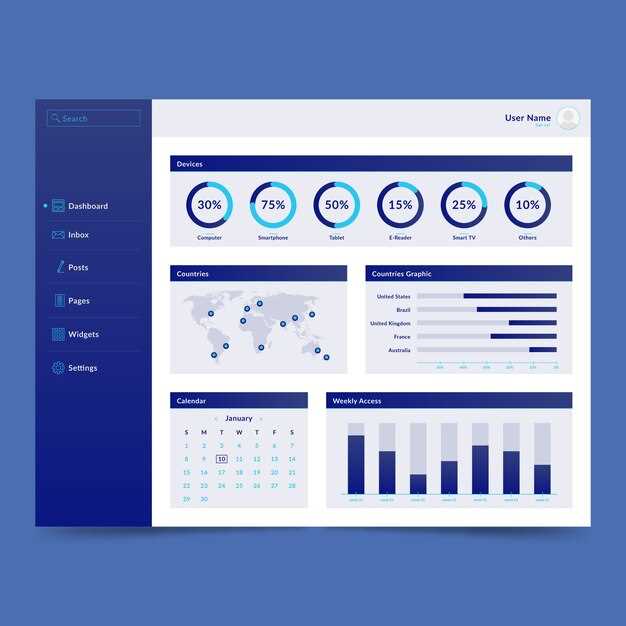Prioritize conducting a thorough keyword cannibalization audit to optimize your website’s search engine rankings. Identifying and resolving cannibalization issues can significantly enhance your site’s visibility, leading to improved organic traffic. Begin by compiling a comprehensive list of keywords for which your site ranks, using analytical tools and search console data to understand where cannibalization might occur.
Analyze performance metrics to determine underperforming pages that compete for the same keyword. Evaluate the content on each page, identifying opportunities to consolidate or differentiate to target user intent effectively. Adjusting on-page elements such as title tags, meta descriptions, and headers can help clearly define each page’s purpose.
Streamline your internal linking structure. Ensure that links are pointing to the most relevant page for each keyword. This strategy aids search engines in understanding the primary focus of each page, reducing the likelihood of cannibalization.
Implement canonical tags where necessary to guide search engines towards the preferred version of similar content. Regular audit cycles, every quarter, can prevent future issues and maintain robust keyword strategies.
Identifying Keyword Cannibalization Issues

Conduct a detailed analysis of your website’s URLs to pinpoint instances where multiple pages are targeting the same keyword. Use tools like Google Search Console, Ahrefs, or SEMrush to extract data on the keywords each page ranks for. Pay special attention to pages that compete for identical or similar search terms, as this is a key indicator of cannibalization.
Examine the performance of these pages. If two or more pages are competing for the same keyword, analyze their ranking positions, click-through rates (CTR), and impressions. Identify patterns such as fluctuating rankings between pages, which may signify cannibalization issues undermining overall site performance.
Study the on-page content carefully. Determine if the content across these pages overlaps significantly in scope or intent. Content with similar headlines, meta descriptions, or titles can lead to confusion for search engines, reducing the effectiveness of your keyword strategy.
Once you’ve identified problematic pages, review each one’s backlink profile. Check for discrepancies in the number and quality of links pointing to each page. Consolidating link equity by redirecting weaker pages to stronger ones can enhance keyword targeting and improve rankings.
Regularly monitor your site’s structure and internal linking strategies. Ensure that internal links are strategically distributed to bolster the authority of a single, relevant page for each keyword. Avoid spreading link value across multiple competing pages.
Addressing these issues will improve your search engine rankings and result in better alignment of content with user search intent, providing a more focused and efficient SEO strategy.
Understanding the Impact of Keyword Cannibalization on SEO
Identify and consolidate pages targeting the same keyword to strengthen your website’s authority on that topic. Multiple pages ranking for a similar keyword can weaken their individual SEO potential, causing them to compete against each other.
- Reduced Page Authority: Google’s algorithm might struggle to decide which page to rank when presented with multiple choices, leading to fluctuations in search engine positions.
- Diluted CTR: When several pages vie for the same keyword, click-through rate is often spread thinly across them, reducing potential traffic for each.
- Internal Confusion: Users might find it challenging to determine which page best satisfies their search intent, potentially leading to higher bounce rates and decreased engagement.
- Wasted Crawl Budget: Search engines periodically visit your site to index content. Multiple competing pages can use up valuable crawl budget on redundant content rather than prioritizing unique and comprehensive pages.
Conduct regular audits to identify instances of keyword cannibalization. Prioritize merging content, employing canonical tags, or repurposing similar pages into more comprehensive resources to streamline SEO efforts and improve performance.
Using Google Search Console to Detect Cannibalization
Analyze your keywords by navigating to the Performance report in Google Search Console. Look for keywords that have multiple pages competing for the same query. Examine the impressions and clicks for each page that ranks for the same keyword, identifying discrepancies in performance.
Google Search Console’s Queries section allows you to filter by specific keywords. Start by analyzing queries with high impressions but low click-through rates, as these might indicate that users are confused by multiple choices across your pages. Ensure that your pages are well-differentiated and serve distinct user intents.
Utilize the Pages section to detect multiple URLs ranking for similar queries. Click on a specific query and observe all the URLs that receive clicks and impressions. Pages with similar titles or content can cannibalize each other’s rankings, so re-evaluate their focus and consider merging content or optimizing one page to stand out.
Pay attention to the Average Position metric. If you notice fluctuations in positioning for the same keyword across different URLs, it might signal cannibalization issues. Consider consolidating content on the highest-performing URL or optimizing one page to serve a clear, specific purpose.
Enable the ‘Date Range’ comparison. Check for position and traffic shifts over different periods. Sudden drops or fluctuations could suggest internal competition. Tackle these by harmonizing content strategies across the site, ensuring that each page targets unique, well-researched keywords.
Analyzing Website’s Content Structure for Overlapping Keywords
Conduct a thorough keyword mapping by compiling a list of all keywords currently targeted across your website. Utilize tools like Google Search Console and SEMrush to gather data on target keywords for each page. Analyze this list against your website’s structure to identify potential overlaps.
Next, examine page titles and meta descriptions across your site. Ensure each is unique and tailored to the specific content of its page. Avoid generic or non-descriptive titles that might inadvertently cause keyword overlap. Use clear and distinct language that accurately reflects the page content.
Utilize content grouping techniques by categorizing content into topic clusters. Each cluster should focus on a core topic, supported by related subtopics in separate pages. This approach minimizes cannibalization risks and enhances topical authority. Create internal links within these clusters to guide users and search engines effectively.
Audit internal links for keyword-rich anchor text duplication. Repeated use of the same anchor text across different pages can confuse search engines about which page should rank for a given keyword. Diversify anchor text to maintain clarity and purpose.
Engage in regular competitive analysis to understand how competitors structure their content. Identify gaps and unique opportunities where your website can offer better-targeted content with less keyword overlap. This knowledge helps refine content strategy to compete more effectively.
Leveraging SEO Tools for Comprehensive Keyword Analysis
Begin with a detailed examination of your current keyword usage by utilizing specialized SEO tools such as Ahrefs, SEMrush, or Moz. These tools enable a deep dive into your website’s keyword performance, providing metrics like search volume, keyword difficulty, and traffic potential.
The following table outlines some key features of these tools:
| SEO Tool | Key Features |
|---|---|
| Ahrefs | Site Explorer, Keyword Explorer, Content Explorer, Rank Tracker |
| SEMrush | Keyword Magic Tool, Domain Overview, Position Tracking, Traffic Analytics |
| Moz | Keyword Explorer, Site Crawl, On-Page Grader, Rank Checker |
Spot redundant keywords that may lead to cannibalization by inspecting keyword overlap reports. This insight helps pinpoint where multiple pages compete for the same keyword, diluting effectiveness. Streamline your strategy by consolidating content or altering keyword targeting to ensure unique focus for each page.
Utilize rank tracking features to stay updated on keyword rankings and adjustments over time. This proactive approach allows for quick adaptation to changes in search trends or algorithm updates, maintaining strong visibility. Draw on competitor analysis functions to understand competing sites’ keyword strategies, helping identify gaps and opportunities in your own approach.
Regularly review and update keyword strategies by integrating new research findings. Keeping abreast with tool updates and additional features can refine your analysis process. By systematically employing these tools, anticipate improved outcomes in organic search performance.
Documenting the Identified Cannibalization Issues
Begin by creating a detailed spreadsheet to log all identified cannibalization issues clearly. Use columns for URL, keyword, search volume, page authority, and ranking position. This structured approach allows quick insights into which pages compete for the same keyword.
Assign a priority level to each issue based on its potential impact on your traffic and conversions. High-volume keywords that lead to significant ranking competition demand immediate attention. Lower-priority items can be scheduled for review later.
Include a section for notes where you can detail specific observations about each page and its content. Highlight elements that might contribute to the cannibalization, such as overlapping content or metadata similarities.
Use color coding in your spreadsheet to differentiate urgent issues from less critical ones. This visual organization enhances data clarity, making it easy to track progress as you address each issue.
Regularly update the spreadsheet with the latest analytics data to monitor changes in page performance. This will help you verify if the steps taken to resolve cannibalization are yielding results or if they need further refinement.
Create a summary tab to visualize overall trends and improvements over time. This will provide a consolidated view of how the resolved issues have affected your rankings and traffic metrics.
Strategies for Fixing Keyword Cannibalization

Consolidate similar content to eliminate redundancy and strengthen authority on a topic. Identify articles that target the same keywords and merge them into a single comprehensive piece. Ensure the most valuable information from each piece is included and redirected to the new unified page.
Implement 301 redirects to channel traffic from the less relevant pages to the primary content that best represents the keyword. This not only improves user experience but also boosts SEO by concentrating link equity on a single page.
Adjust keyword targeting for pages with overlapping content. Assign specific keywords to each page based on their unique value propositions. Diversify the keyword strategy to ensure each page targets distinct phrases, avoiding competition within your site.
Use internal linking strategically to guide search engines and users to the preferred content. Link from cannibalizing pages to the main page using the targeted keyword as anchor text, enhancing the prominence of the chosen page for that topic.
Regularly monitor site performance to detect and rectify emerging issues. Utilize tools like Google Search Console to track keyword rankings and spot instances of self-competition early. Consistent audits ensure sustained optimization and prevent future conflicts.
Consolidating Content to Improve SEO Performance
Identify pages targeting similar keywords and analyze their performance metrics such as traffic, bounce rate, and conversion rates. Choose the page with better metrics as the primary content to retain.
- Combine the content of redundant pages into the chosen primary page. This strengthens the relevance and comprehensiveness of the main content, potentially increasing its authority in search engine rankings.
- Redirect the URLs of the removed pages to the primary page using 301 redirects. This transfers the link equity from the old pages, consolidating the SEO value into a singular, stronger page.
- Update the internal linking structure to reflect these changes. Ensure that internal links from other parts of the website point to the consolidated page. This helps users and search engines find the primary content easily.
- Monitor the performance of the consolidated page after implementing changes. Track metrics like organic traffic, click-through rates, and keyword rankings to assess if the consolidation positively impacts SEO performance.
Consider engaging with user comments from the removed pages, integrating valuable discussions into the main content where relevant. This not only preserves user insights but also keeps the content dynamic and engaging.
Re-optimizing Pages with Unique Keywords
Identify underperforming pages by analyzing their organic traffic and engagement metrics. Once identified, conduct thorough keyword research to find unique, low-competition keywords relevant to the page’s content. Use tools like Google Keyword Planner or Ahrefs to pinpoint these opportunities.
Revise the page’s content to naturally integrate these unique keywords. Ensure headings, subheadings, and body text are aligned and support the keyword strategy. This will not only improve search visibility but also enhance the page’s relevance to the targeted queries.
Examine the metadata, including the title tag and meta description. These should incorporate the new unique keywords effectively, enticing users to click through from search results. Aim for compelling and concise copy that reflects the page’s improved focus.
Review and update internal links pointing to the re-optimized page. Use keyword-rich anchor text that reinforces the new content focus, aiding both users and search engines in understanding the page’s enhanced relevance.
Monitor the impact of changes by tracking key metrics such as organic traffic, bounce rate, and average session duration. Regular analysis allows for adjustments and further optimization based on performance data.
Continuously audit your content strategy to ensure pages are not competing with each other. By maintaining a clear keyword focus for each page, you reinforce the site’s authority and improve overall ranking potential.
Implementing 301 Redirects for Underperforming Pages
Identify underperforming pages by analyzing traffic and conversion data. Determine which pages with similar content are cannibalizing your primary keywords. For each identified page, set up a 301 redirect to consolidate authority and drive traffic to a more relevant or authoritative page on the same topic.
Utilize Google Analytics and Google Search Console to locate pages with minimal organic traffic and high bounce rates. Redirect these to higher-performing counterparts or similar content clusters to improve user experience and search engine ranking.
Ensure that the redirect points to a page with related content to preserve context and relevance. This maintains a seamless user journey, enhancing engagement metrics while transferring equity efficiently.
Regularly audit your website to prevent internal link disruptions caused by new redirects. Update any references to the old URLs in existing content, navigation, and sitemaps to avoid 404 errors, preserving the integrity of your site’s architecture.
Continuous monitoring post-implementation will help assess the impact of the changes. Examine improvements in traffic metrics and rankings to refine future strategies. This proactive approach aids in maximizing the potential of your website by utilizing 301 redirects strategically.
Q&A:
What is keyword cannibalization, and why should I be concerned about it?
Keyword cannibalization occurs when multiple pages on your website target the same or similar keywords, leading to competition between them in search engine rankings. This can dilute your site’s authority and result in lower rankings overall. Addressing this issue can help consolidate your site’s SEO and improve its visibility.
How do I identify keyword cannibalization on my site?
To spot keyword cannibalization, you can use tools like Google Search Console, SEMrush, or Ahrefs to analyze your site’s keyword rankings. Look for cases where multiple pages rank for the same keyword and are competing against each other. This overlapping can indicate cannibalization.
Can keyword cannibalization be harmful to my website’s SEO?
Yes, keyword cannibalization can be detrimental to your SEO efforts as it splits the search traffic among multiple pages, reducing the potential visibility of each. Instead of one strong page, you end up with several weaker ones, which can make competing for top rankings more challenging.
What steps can I take to fix keyword cannibalization?
To resolve keyword cannibalization, you can combine content from similar pages, use 301 redirects to consolidate authority, or differentiate the keyword targeting strategy for each page. Ensuring unique content and clear keyword focus for every page can help improve your site’s performance.
How often should I perform a keyword cannibalization audit for my website?
Performing a keyword cannibalization audit should be part of your regular SEO maintenance routine. Depending on the size and activity level of your website, scheduling an audit every 6 to 12 months can help catch potential issues before they impact your site’s search ranking adversely.




